- Home›
- Healthy Living›
- International Yoga Day 2023: 7 Yoga Asanas To Keep Your Heart Healthy
International Yoga Day 2023: 7 Yoga Asanas To Keep Your Heart Healthy
By: Priyanka Maheshwari Mon, 19 June 2023 10:09:25
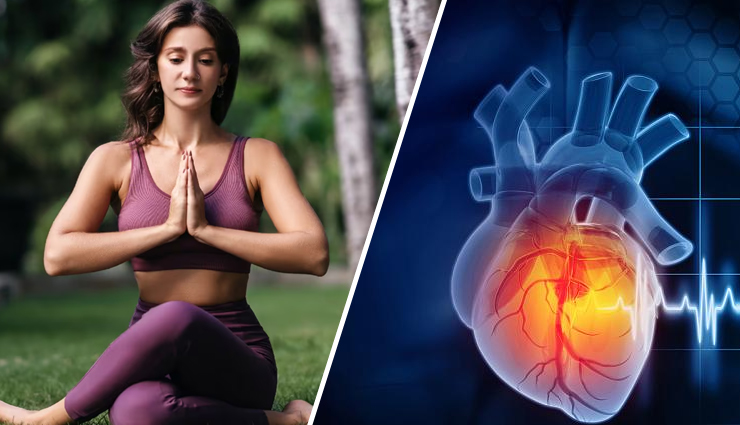
Yoga is a comprehensive practise that improves the mind, body, and spirit as well as a physical workout. Let's take a look at 7 strong yoga asanas that can help keep your heart healthy on International Yoga Day 2023. These asanas support cardiovascular health by strengthening the heart muscles, improving blood circulation, and lowering the risk of heart disease. Including these asanas in your regular practise will help you maintain a healthy heart and general well-being. Let's dive into the practice:
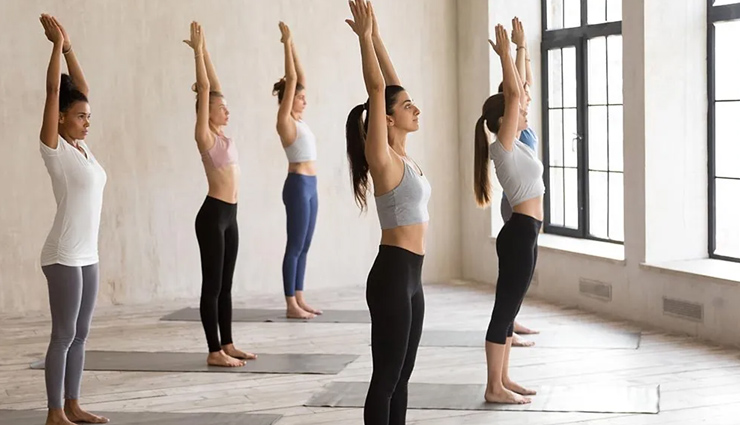
# Tadasana (Mountain Pose)
Tadasana is the foundation for all standing poses and helps improve posture, balance, and stability. Stand tall with your feet hip-width apart, align your spine, engage your core, and relax your shoulders. Take slow, deep breaths, focusing on expanding your chest. This asana improves blood circulation, oxygenates the body, and stimulates the heart.
Steps to Practice Tadasana (Mountain Pose):
- Stand with your feet hip-width apart, ensuring that your weight is evenly distributed on both feet. Keep your toes pointing forward.
- Align your body by lengthening your spine. Imagine a string pulling you up from the top of your head, elongating your neck and keeping your chin parallel to the ground.
- Relax your shoulders, allowing them to gently roll back and down. Draw your shoulder blades toward each other, opening your chest.
- Engage your core muscles by gently drawing your navel toward your spine. This will help stabilize your torso.
- Allow your arms to hang naturally by your sides, with your palms facing inward.
- Soften your facial muscles and relax your jaw. Maintain a soft gaze forward or close your eyes for a more meditative experience.
- Take slow, deep breaths, focusing on expanding your chest and feeling the connection between your feet and the ground.
- Maintain the pose for several breaths or as long as feels comfortable for you. Be mindful of your alignment and make any necessary adjustments.
Precautions:
- If you have any specific medical concerns or injuries, consult with a qualified yoga instructor before practicing Tadasana.
- If you experience dizziness or lightheadedness, come out of the pose and find a seated or lying position.
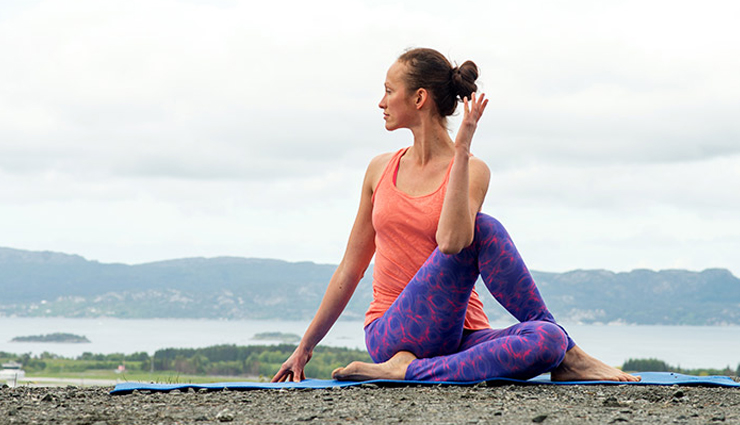
# Ardha Matsyendrasana (Half Spinal Twist Pose)
Ardha Matsyendrasana is a seated spinal twist that massages the abdominal organs, including the heart, improving digestion and blood flow. Sit with your legs extended, bend one knee and place the foot outside the opposite thigh. Twist towards the bent knee, placing your opposite elbow outside the knee, and gently look over your shoulder. Take deep breaths and feel the twist through your spine and abdomen.
Steps to Practice Ardha Matsyendrasana (Half Spinal Twist Pose):
- Begin by sitting on the floor with your legs extended in front of you.
- Bend your right knee and place your right foot flat on the ground close to your left buttock.
- Cross your left leg over your right knee, placing your left foot flat on the floor outside your right thigh.
- Inhale and lengthen your spine, sitting up tall.
- As you exhale, twist your torso to the right, placing your left hand on the floor behind you for support.
- Bring your right arm to the outside of your left thigh, placing your palm or fingertips on the floor or wrapping your arm around your left leg.
- Gently deepen the twist with each exhalation, being mindful not to strain or force the movement.
- Keep your spine long, and ensure that both sitting bones are grounded evenly on the floor.
- Hold the pose for 30 seconds to 1 minute, breathing deeply and maintaining a relaxed but engaged posture.
- To release, slowly unwind the twist and come back to the starting position.
- Repeat the same steps on the opposite side, bending the left knee and crossing the right leg over the left.
Precautions:
- Avoid Ardha Matsyendrasana if you have a recent or chronic back injury, spinal or abdominal surgeries, or herniated discs. Consult with a qualified yoga instructor or healthcare professional if you have any concerns or limitations.
- Modify the pose as needed by using props such as blankets or blocks for support and to maintain proper alignment.
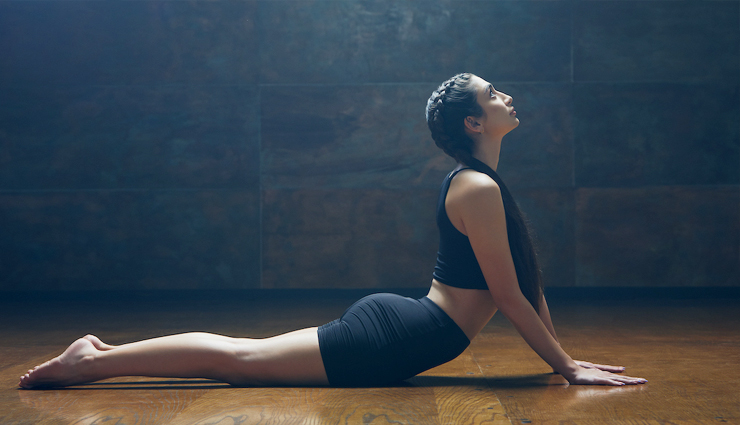
# Bhujangasana (Cobra Pose)
Bhujangasana is a gentle backbend that stretches the chest and strengthens the back muscles. Lie on your stomach, place your palms near your shoulders, and lift your chest off the ground while keeping your pelvis and legs grounded. Breathe deeply, opening your heart and elongating the spine. This asana improves lung capacity, stimulates the heart, and enhances circulation.
Steps to Practice Bhujangasana (Cobra Pose):
- Begin by lying on your stomach with your legs extended, feet hip-width apart, and tops of the feet pressing firmly into the mat.
- Place your hands on the mat, directly under your shoulders, fingertips pointing forward and slightly turned inward.
- Inhale and gently press your palms into the mat, engaging your arms and lifting your upper body off the ground.
- Keep your elbows close to your body, drawing your shoulder blades down and back to open your chest.
- Lengthen your neck, keeping it in line with your spine, and look forward or slightly upward without straining the neck.
- Press the tops of your feet firmly into the mat, engaging your leg muscles.
- As you hold the pose, breathe deeply and allow your chest to expand with each inhalation.
- Take care not to strain or overextend your back. Find a comfortable height that allows you to experience a gentle stretch.
- Hold the pose for 15 to 30 seconds, gradually increasing the duration as you become more comfortable and flexible.
- To release, exhale and gently lower your upper body back down to the mat, resting your forehead on the ground.
- Rest in Child's Pose or any other comfortable resting position, allowing your body to relax and integrate the effects of the pose.
Precautions:
- Avoid Bhujangasana if you are pregnant, have a recent back injury, or any condition that may be aggravated by a backbend. Consult with a qualified yoga instructor or healthcare professional if you have concerns or specific limitations.
- Listen to your body and practice within your own comfort zone. Avoid pushing yourself beyond your limits or experiencing pain.
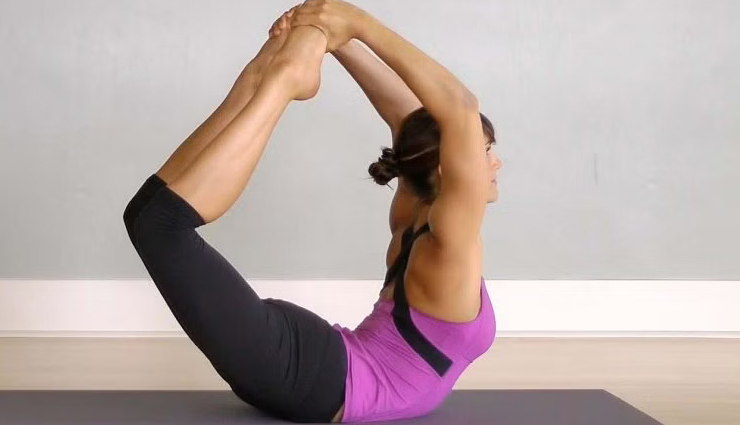
# Dhanurasana (Bow Pose)
Dhanurasana is an invigorating pose that opens the chest, stretches the front of the body, and strengthens the back muscles. Lie on your stomach, bend your knees, and hold your ankles. Inhale deeply and lift your chest and thighs off the ground, creating a bow-like shape with your body. Feel the stretch in your chest and the activation of your back muscles. This pose stimulates the cardiovascular system and promotes a healthy heart.
Steps to Practice Dhanurasana (Bow Pose):
- Begin by lying on your stomach with your legs hip-width apart and your arms alongside your body, palms facing upward.
- Bend your knees and bring your heels toward your buttocks, keeping them hip-width apart.
- Reach your arms back and grasp your ankles or feet with your hands.
- Inhale deeply and lift your chest off the ground, simultaneously kicking your feet into your hands to raise your thighs off the mat.
- Keep your gaze forward and find a focal point to maintain balance and stability.
- Engage your core muscles and draw your shoulder blades toward each other, opening your chest.
- Continue to breathe deeply and evenly, allowing your body to relax into the pose while maintaining gentle tension in the muscles.
- Hold the pose for 20 to 30 seconds, gradually increasing the duration as you become more comfortable.
- To release, exhale and gently lower your chest, thighs, and feet back to the mat.
- Rest in Child's Pose or any other comfortable resting position, allowing your body to recover and integrate the effects of the pose.
Precautions:
- Avoid Dhanurasana if you have recent or chronic back injuries, neck injuries, or any condition that may be aggravated by a backbend. Consult with a qualified yoga instructor or healthcare professional if you have concerns or specific limitations.
- Practice with awareness and honor your body's limits. Do not force or strain in the pose, and listen to the signals your body provides.
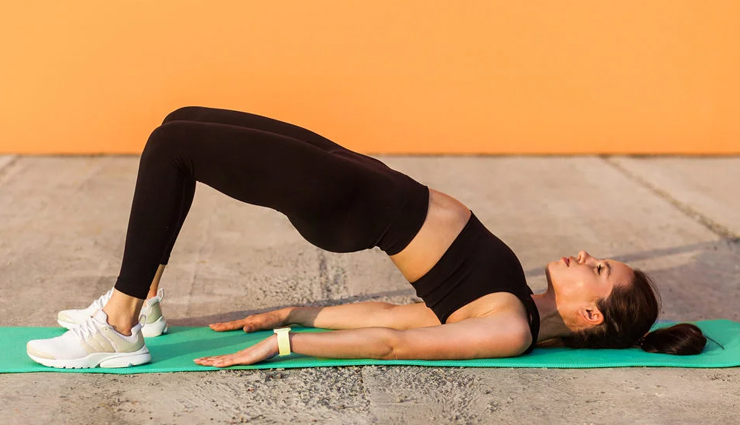
# Setu Bandhasana (Bridge Pose)
Setu Bandhasana is a rejuvenating backbend that strengthens the back, legs, and glutes while opening the chest. Lie on your back with your knees bent, feet hip-width apart, and arms by your sides. Press your feet into the ground, lift your hips, and interlace your fingers beneath your back. Breathe deeply, allowing your chest to expand and your heart to lift. This asana improves blood circulation and relieves stress and anxiety.
Steps to Practice Setu Bandhasana (Bridge Pose):
- Begin by lying on your back with your knees bent and feet hip-width apart, flat on the mat. Ensure that your arms are resting alongside your body, palms facing down.
- Press your feet firmly into the mat, engaging your leg muscles. Keep your knees aligned with your ankles.
- On an inhale, lift your hips off the mat, using the strength of your legs and glutes. Imagine lengthening your tailbone toward your knees to create a gentle curve in your lower back.
- Roll your shoulders back and interlace your fingers underneath your body, pressing your arms into the mat for support.
- Keep your neck relaxed and gaze straight ahead, avoiding any strain on the neck.
- Take deep, steady breaths, expanding your chest and allowing the ribcage to lift.
- Hold the pose for 30 seconds to 1 minute, or longer if comfortable, while maintaining steady breathing.
- To release, exhale and gently lower your hips back down to the mat, unclasp your hands, and rest in a neutral position.
- Take a few moments in Corpse Pose (Shavasana) to integrate the effects of the pose and allow your body to relax.
Precautions:
- Avoid Setu Bandhasana if you have a neck or shoulder injury, recent or chronic back pain, or if you are pregnant. Consult with a qualified yoga instructor or healthcare professional if you have any concerns or limitations.
- If you experience discomfort or strain in your lower back, you can place a folded blanket or bolster under your sacrum for support.
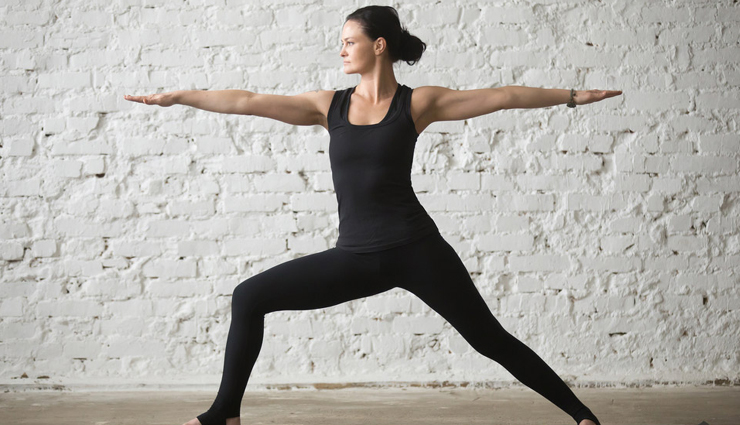
# Virabhadrasana II (Warrior II Pose)
Virabhadrasana II is a dynamic standing pose that strengthens the legs, opens the hips, and expands the chest. Stand with your feet wide apart, turn your right foot out, and bend your right knee while keeping your left leg straight. Stretch your arms out to the sides, parallel to the ground, and gaze over your right fingertips. Feel the strength and energy in your body as you hold this powerful pose. Warrior II improves circulation, builds endurance, and promotes cardiovascular health.
Steps to Practice Virabhadrasana II (Warrior II Pose):
- Begin in a standing position at the top of your mat. Step your feet wide apart, approximately 3 to 4 feet distance, depending on your comfort and flexibility.
- Turn your right foot out to a 90-degree angle, ensuring that the heel is aligned with the arch of your left foot.
- Extend your arms out to the sides, parallel to the floor, with your palms facing downward.
- Bend your right knee, ensuring that it is directly above your ankle. Keep your left leg extended and engaged.
- Gaze over your right fingertips, keeping your head in a neutral position. Align your hips and shoulders to face the long edge of your mat.
- Engage your core muscles and maintain a steady, even breath.
- Sink deeper into the pose by pressing firmly through the outer edge of your left foot and grounding down through your right foot.
- Hold the pose for 30 seconds to 1 minute, or longer if comfortable, while maintaining steady breathing and focusing on your alignment and stability.
- To release, straighten your right leg, turn your feet to face forward, and bring your arms back down to your sides.
- Repeat the same steps on the opposite side, turning your left foot out and bending your left knee.
Precautions:
- Avoid Warrior II Pose if you have any recent or chronic knee, hip, or shoulder injuries. If you have any concerns or limitations, consult with a qualified yoga instructor or healthcare professional before practicing.
- If you experience discomfort in your front knee, adjust your stance or reduce the depth of your knee bend to a comfortable level.
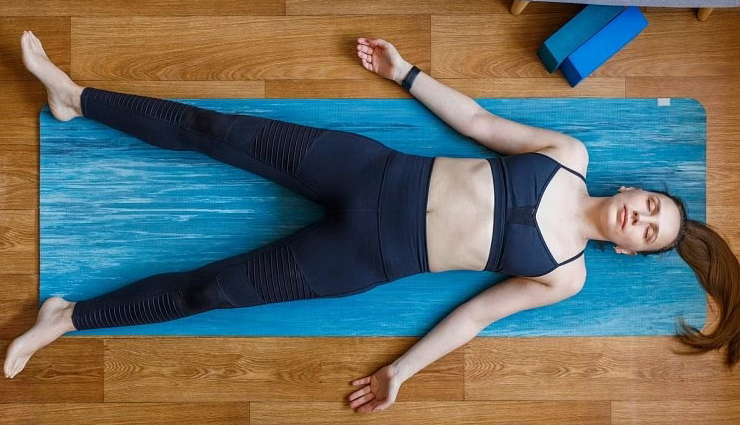
# Shavasana (Corpse Pose)
Shavasana is a final relaxation pose that allows the body to fully rest and integrate the benefits of the previous asanas. Lie flat on your back with your arms by your sides, palms facing up. Close your eyes and consciously relax each part of your body, releasing tension and surrendering to the present moment. Focus on your breath, allowing it to slow down and deepen. This pose promotes relaxation, reduces stress, and calms the mind, ultimately benefiting heart health.
Steps to Practice Shavasana (Corpse Pose):
- Find a quiet and comfortable space, preferably on a yoga mat or a soft surface. Lie down on your back with your legs extended, feet slightly apart, and arms resting alongside your body, palms facing up.
- Allow your legs to relax and let your feet naturally fall open to the sides.
- Gently tuck your shoulder blades underneath you, creating a slight lift in the chest, and then let your shoulders relax back and down, away from your ears.
- Soften your facial muscles, release tension from your jaw, and allow your eyes to gently close.
- Bring your awareness to your breath, observing the natural rhythm of inhaling and exhaling.
- As you inhale, feel the expansion and rise of your abdomen and chest. As you exhale, feel the gentle release and relaxation throughout your body.
- Let go of any thoughts or distractions, and focus on releasing tension from each part of your body, starting from your toes all the way up to the top of your head.
- Remain in this pose for 5 to 10 minutes, or longer if desired. Allow yourself to surrender to the stillness and quietude of the pose.
- To release, gently deepen your breath, wiggle your fingers and toes, and gradually awaken your body.
- Roll onto your right side, using your right arm as a pillow, and take a few moments to transition back to a seated position.
Precautions:
- Shavasana is generally safe for everyone. However, if you experience discomfort in your lower back, you can place a bolster or folded blanket under your knees to provide support.
- If you have difficulty lying flat on your back, you can also practice a modified version of Shavasana by elevating your upper body with the support of a bolster or folded blanket.
Disclaimer: It is always advisable to practice yoga under the guidance
of a qualified yoga instructor, especially if you have any pre-existing
health conditions or concerns related to your heart.





